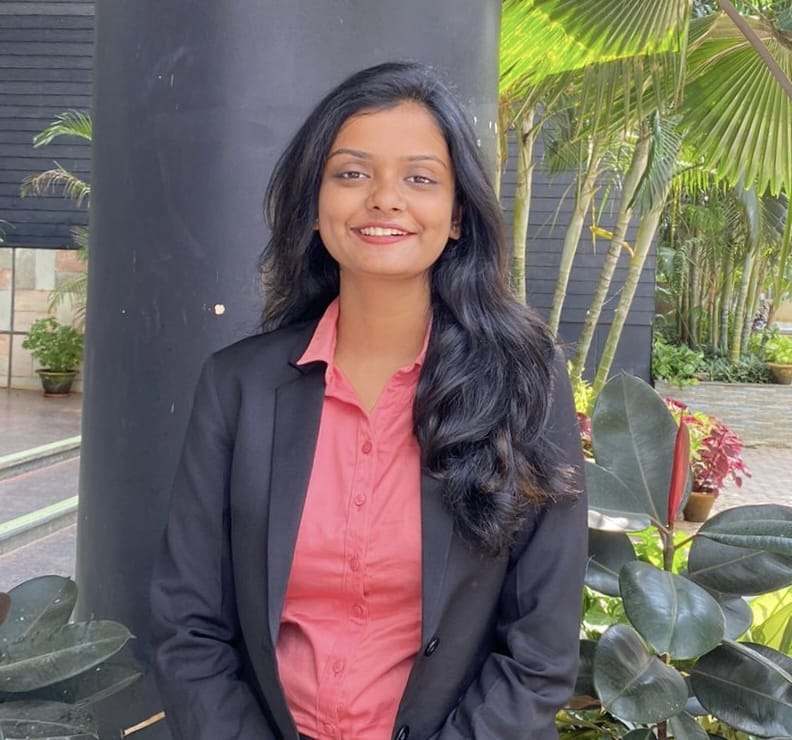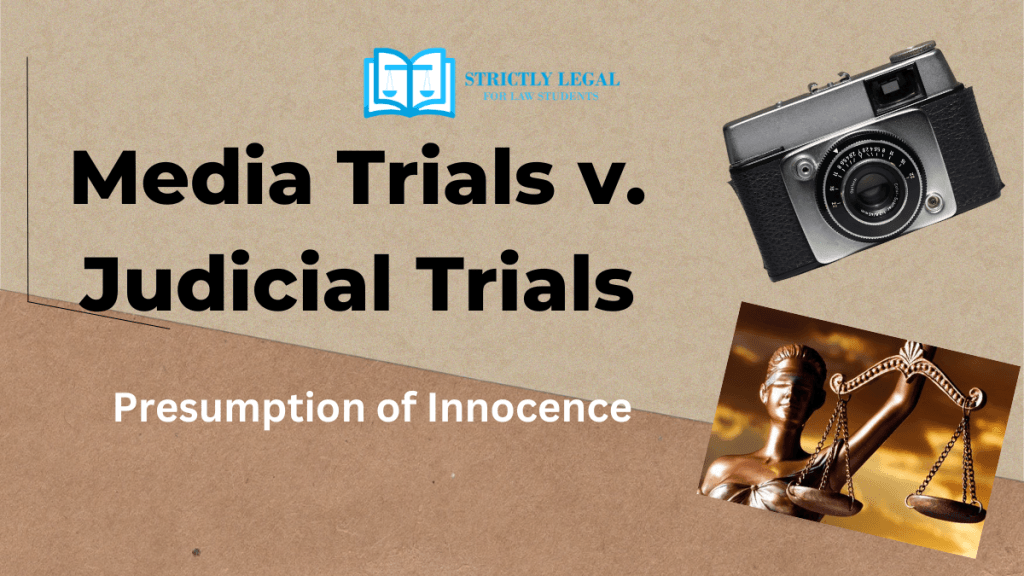The practice of media trials has gained significant interest in the legal community in recent years, particularly in India, where high-profile cases frequently attract a lot of media coverage. Public opinion can occasionally be influenced by this media-driven narrative before the legal system has had a chance to comment. The legal system and the right to a fair trial may thus be in jeopardy. The main distinctions, the impact of media trials, and their effects on the legal system are examined in this article. The term “media trial” got its name in the United States of America during the period of 19th Century and got it’s Indian recognition in the case of K.M. Nanavati v. State of Maharashtra.
Gone are the times where media houses were expected to act unprejudiced and present the same to the public at large, leaving it on them to pick sides. The distinction between sensationalizing stories and relaying facts is frequently hazy. Public opinion can be shaped by media representation, which may result in biased opinions and have an impact on the judicial system. Judges may feel under excessive pressure to take into account public opinion shaped by media narratives as a result of this. The fundamental right to a fair trial, which is protected by Article 21 of the Indian Constitution and protects the right to life and personal liberty, may be compromised by media trials. They can result in character assassination and social exclusion based on unsubstantiated information, and they can threaten the assumption of innocence, which states that a person is innocent until proven guilty.
Table of Contents
What are Media Trials?
When an accused individual is tried in a court of public opinion as opposed to a formal court of law, is known as a media trial. This phrase usually refers to situations in which the media actively investigates, prosecutes, and renders a decision regarding an individual prior to the judiciary rendering a verdict. In these situations, media sources frequently exaggerate the facts or present the case in an inaccurate manner, which affects public opinion and occasionally even the verdict in court. In high-profile instances, such as criminal prosecutions involving politicians, celebrities, or other public figures, media trials are especially common. Beyond merely reporting facts, the media also shapes the story, shapes public opinion, and occasionally serves as a jury, judge, and executioner. Judicial independence and the core legal presumption of innocence until proven guilty are seriously threatened by this.
Most certain example of one of such instance would be the case of Aarushi Talwar Murder case, where in her own parents were pictured as murderers. Fortunately enough, they were discharged by the Allahabad High Court. In the spine chilling case of rape and murder- Nirbhaya Rape case, it was the media who made it a public movement however, truth to be to told victim blaming has never left Indian societies as in certain news channels the victim’s character was also questioned for being out in the later evening and was subtly blamed for the reason of being raped. Such a practice of questioning the victim’s character and blaming her whereabouts for the cause of rape also subtly and practically demotivates other rape survivors to voice up and fight for their rights.
Judicial Trials
Judicial trials, as opposed to media trials, are court processes in which a defendant’s guilt or innocence is decided by a court of law after a systematic investigation, collection of evidence, and presentation of arguments. Rules of procedure that guarantee impartiality and justice regulate judicial trials. Judges do not base their rulings on popular opinion, but rather on established laws, court-presented facts, and precedents. The rules of procedure that regulate judicial trials guarantee impartiality and fairness. Rather than relying on popular opinion, judges base their decisions on established laws, court-presented facts, and precedents.
The Apex Court has rather picked out various cases to showcase the examples of media trials and how media houses should act responsibly.
Examples of Media Trials with Case Laws
In the very limelight case of Air India Urination Case (2023) the pee-gate incident of mid-air urination was performed by one of the passengers in an Air India airbus, where it was alleged by a female co passenger that the accused was boarded even while being intoxicated urinated on her mid- air resulting to drenching her clothes, bags and socks. However, the accused was banned from flying for 6 months. That said, the media houses showcased this case in such a manner as if this was more like the nation at stake. The court also remarked that such a practice from the big shots media houses are only to drive “TRPs” as clearly the accused was called names publicly in national televisions and was disparaged. Where the judges to the case were of the opinion that everyone has the right to dignity and evidently, the media houses invade the right to privacy of any individual who is in question for the sake of getting their TRPs.
The very own case of Late Bollywood Actor Sushant Singh Rajput, the accused i.e., his partner Rhea Chakraborty was constantly stalked and updated by the media and her character assassination was the cherry on top. The Media Trials went up to such an extent that her personal chats and images were leaked and shown in the National Television to the public at large. She was also accused of performing black magic on the late actor and has abetted his suicide. The accusation and media trials went on and on to an extent where the Bombay High Court had to finally break the ice by stating that intervenes big time with the administration of justice and could also lead to clogging up the investigation and administration of justice.
Article 19: The Freedom of Press
In contemporary democracies, the conflict between press freedom and media trials has grown to be a major worry. The right to freedom of speech and expression, guaranteed under Article 19(1)(a) of the Indian Constitution, is a fundamental pillar of democracy. It allows media to operate freely, report on events, and engage in public discourse. However, when media outlets take on the role of the judge, often speculating or pronouncing guilt before a legal verdict is rendered, the situation becomes complicated. This can result in media trials, where the accused is judged by public opinion rather than by the judicial process, leading to a clash between media freedoms and the right to a fair trial.
Article 19(1)(a) of the Indian Constitution guarantees the right to freedom of speech and expression, which includes the right of the media to publish information, critique the government, and discuss matters of public interest. The media’s role is to inform the public, provide checks and balances on governmental power, and ensure transparency in society. This is a cornerstone of democracy. However, the freedom of the press is not absolute and is subjected to certain restrictions and obligations. Article 19(2) outlines several grounds on which this freedom can be restricted.
While the freedom of the press is essential for the functioning of democracy, its exercise can sometimes interfere with the judicial system. Media trials pose a significant challenge to the right to a fair trial (protected under Article 21 of the Constitution), the presumption of innocence, and the integrity of the judicial process. The public and the courts may be swayed by media trials, which makes it challenging for legal proceedings to progress independently of outside interference. Biased or sensationalized media coverage can influence public opinion, resulting in a trial by public opinion as opposed to the law. When someone is branded guilty by the media before the trial even starts, it undermines the presumption of innocence, which states that a person is innocent until proven guilty. This damages the accused’s reputation and jeopardizes their right to a fair trial.
Contempt of court may result from media coverage of court cases that impedes the administration of justice. Any action that hinders or impedes the administration of justice may result in contempt charges under Section 2(c) of the Contempt of Courts Act, 1971. If it can be demonstrated that a media outlet’s actions compromise the court system, they may be charged with contempt if they post biased content, make predictions about the outcome of a case, or broadcast unconfirmed information. In order to stop such interference, courts have occasionally stepped in and issued gag orders or restricted media coverage.
The accused’s defamation is another problem. When someone is depicted as guilty in a media trial without following the proper procedures, it frequently results in public defamation. The harm to the person’s reputation could be irreversible, even if they are eventually found not guilty. In addition to harming someone’s reputation, the media’s decision to declare someone guilty before their case has been heard in court also violates their right to dignity, which is guaranteed by Article 21.
Conclusion
The clash between media trials and freedom of the press is a complex issue. While media freedom is a cornerstone of democracy, the rights of the accused, the integrity of the legal process, and the right to a fair trial must be safeguarded. The media must exercise its freedom responsibly, ensuring that its reporting does not interfere with the judicial process or prejudice the rights of individuals involved in legal proceedings. India’s legal framework, including Article 19(2) and the Contempt of Courts Act, provides a mechanism to ensure that media outlets do not cross the line between reporting and interference. Courts must continue to play an active role in curbing media excesses that threaten the fairness of legal trials, while media outlets must recognize their responsibility to provide accurate, impartial reporting without sensationalizing or influencing the judicial process. By striking a balance between media freedom and the right to a fair trial, both the press and the legal system can function in harmony to preserve justice in a democratic society.

Law student.
Turning legal insights into engaging narratives.





